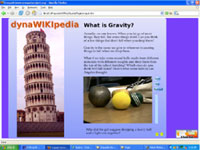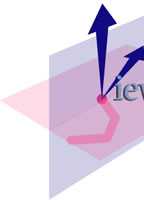Powerful Ideas Content
and How to Represent it
The web and majority of web browsers generally only provide consumer interfaces and unlike all other personal computer applications, forget to include WYSIWYG (What You See Is What You Get) authoring for end-users. But end-users need and want to author. This has led to the popularity of wikis and blogs, which exploit a loop-hole in browsers by using a text field to allow a non-WYSIWYG form of text entry. More can and has been done with JavaScript, but it is not robust enough to make a powerful thin-client. Java itself has failed in a number of ways to be the needed universal implementation facility provided with every browser.
These results are not in the spirit of personal computing and are quite far from what is needed both generally on the web and especially for the $100 laptop. For example, the Wikipedia is impressive in its number of entries and that it has been made and sustained by the larger Internet community, but its content is mostly hyperlinked text with a few pictures and formulas. It is very far from rich dynamic computer media and from the kind of content that most learners need.
 Example of a dynamic "WysiWiki" article
As an example, the Wikipedia article on Gravity states what scientists claim about gravity but is quite unscientific in that it doesn't exhibit any evidence for any of the scientific theories from Galileo, Newton or Einstein. Even though it is rather easy even for children to discover Galileo's characterization for gravity near the surface of the Earth, and to actually derive the 2nd order differential equation of motion, there is no such pathway provided, even on the children's pages. What is needed is a dynamic WYSIWYG media that combines the full power of computing and the ease of entry, editing, and quick (wiki) publishing to the web.
The research team at Viewpoints Research is working on ways to create, illustrate and share powerful ideas content in both dynamic and WSIWYG ways.
|

